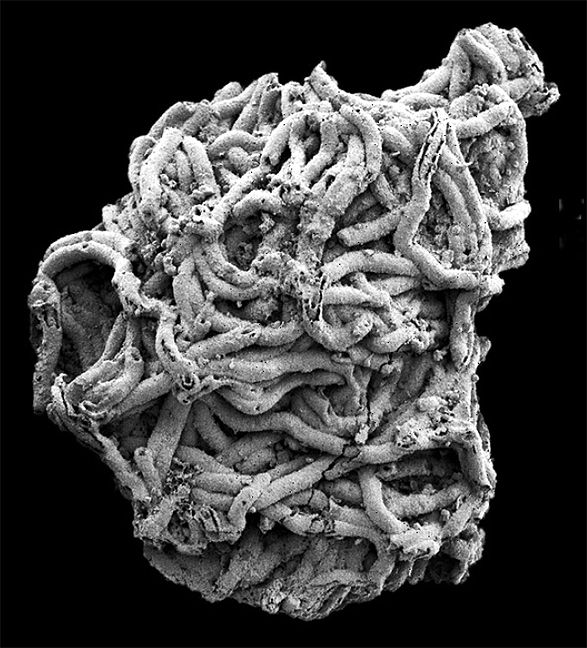
| A mass of tangled Girvanella blue-green cyanobacterial filaments dissolved out of carbonates at the top (youngest phases of sedimentary deposition) of the lower Cambrian Mule Spring Limestone, Esmeralda County, Nevada; specimen is greatly magnified. The spaghetti-like strands constitute remains of the actual cyanobacterial algal growths that contributed to the formation of the abundant Girvanella algal nodules so prevalent in Mule Spring Limestone accumulations exposed throughout the Great Basin Desert of Nevada and eastern California. Photograph courtesy a specific scientific publication. |